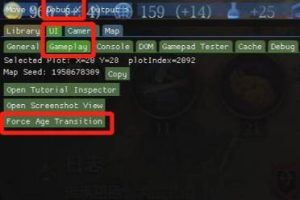
如何使用MongoDB开发一个简单的区块链系统
区块链技术近年来备受关注,因其去中心化、安全性高等特点,被广泛用于加密货币、合约管理等领域。本文将介绍如何使用MongoDB开发一个简单的区块链系统,并提供相应的代码示例。
1.安装和配置MongoDB
首先,我们需要安装MongoDB并进行相应的配置。可以在MongoDB的官方网站上下载最新的稳定版本,并根据官方文档进行安装和配置。
2.创建数据库和集合
在MongoDB中,我们可以通过创建数据库和集合来存储区块链系统的相关数据。打开MongoDB的命令行客户端,输入以下命令创建一个数据库和一个集合:
use blockchainDB
db.createCollection(“blocks”)
3.定义区块结构
在区块链中,每个区块包含了前一个区块的哈希值、交易数据以及时间戳等信息。我们可以使用MongoDB的文档结构来定义一个区块的结构。在命令行客户端中输入以下命令:
db.blocks.insertOne({
“previousHash”: “0”,
“data”: “Genisis Block”,
“timestamp”: new Date()
})
这样就创建了一个初始的区块。
4.定义区块链类
接下来,我们可以使用Python来定义一个区块链的类。以下是一个简单的示例代码:
from hashlib import sha256
import json
class Block:
def __init__(self, index, previousHash, data, timestamp): self.index = index self.previousHash = previousHash self.data = data self.timestamp = timestamp self.hash = self.calculateHash() def calculateHash(self): return sha256(str(self.index) + self.previousHash + self.data + str(self.timestamp)).hexdigest()
class Blockchain:
def __init__(self):
self.chain = [self.createGenesisBlock()]
def createGenesisBlock(self):
return Block(0, "0", "Genisis Block", "01/01/2020")
def addBlock(self, data):
index = len(self.chain)
previousHash = self.chain[-1].hash
timestamp = datetime.datetime.now().strftime("%d/%m/%Y")
newBlock = Block(index, previousHash, data, timestamp)
self.chain.append(newBlock)
def printChain(self):
for block in self.chain:
print("Block index:", block.index)
print("Previous hash:", block.previousHash)
print("Data:", block.data)
print("Timestamp:", block.timestamp)
print("Hash:", block.hash)
print("-" * 20)
注意,示例代码中使用了Python的hashlib来计算区块的哈希值,并使用了json模块将区块信息转换成JSON格式。
5.将区块链数据存储到MongoDB中
为了将区块链数据存储到MongoDB中,我们可以使用官方提供的Python驱动程序PyMongo。以下是一个示例代码,将之前定义的区块链类改造为存储到MongoDB的形式:
from pymongo import MongoClient
client = MongoClient()
class Block:
def __init__(self, index, previousHash, data, timestamp):
self.index = index
self.previousHash = previousHash
self.data = data
self.timestamp = timestamp
self.hash = self.calculateHash()
def calculateHash(self):
return sha256(str(self.index) + self.previousHash + self.data + str(self.timestamp)).hexdigest()
def toDict(self):
return {
"index": self.index,
"previousHash": self.previousHash,
"data": self.data,
"timestamp": self.timestamp,
"hash": self.hash
}
class Blockchain:
def __init__(self):
self.collection = client.blockchainDB.blocks
self.chain = [self.createGenesisBlock()]
def createGenesisBlock(self):
return Block(0, "0", "Genisis Block", "01/01/2020")
def addBlock(self, data):
index = len(self.chain)
previousHash = self.chain[-1].hash
timestamp = datetime.datetime.now().strftime("%d/%m/%Y")
newBlock = Block(index, previousHash, data, timestamp)
self.collection.insert_one(newBlock.toDict())
self.chain.append(newBlock)
def printChain(self):
for block in self.collection.find():
print("Block index:", block["index"])
print("Previous hash:", block["previousHash"])
print("Data:", block["data"])
print("Timestamp:", block["timestamp"])
print("Hash:", block["hash"])
print("-" * 20)
在示例代码中,我们使用了PyMongo的MongoClient类连接到MongoDB,默认连接到本地的数据库。在Block类的toDict方法中,将区块的各个属性转换成字典形式,以便存储到MongoDB中。在Blockchain类中,我们使用了MongoDB的find方法遍历和打印所有的区块。
通过以上步骤,我们使用MongoDB开发了一个简单的区块链系统。你可以根据自己的需求和实际情况进一步扩展和完善。区块链技术不仅限于加密货币领域,还可以应用于合约管理、供应链管理等众多领域,帮助提高数据的透明度和安全性。
原文来自:www.php.cn

















































暂无评论内容